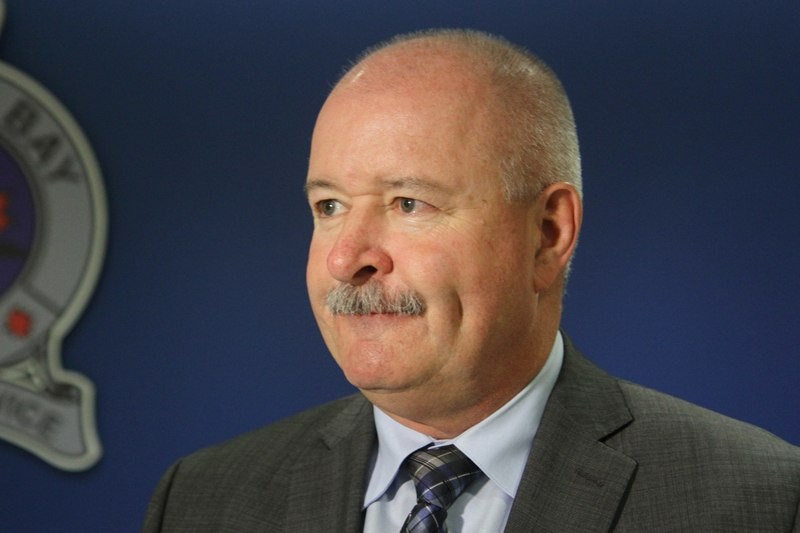Police forces in Ontario are spending only 20 per cent of their resources on crime.
"It's dealing with marginalized people, people who have addictions or mental health issues," said Paul Cook, the president of the Ontario Association of Chiefs of Police and the chief of the North Bay Police Service, about the other 80 per cent.
Cook was in Thunder Bay Thursday to speak about provincial policing issues at the Zone 1 Ontario Association of Chiefs of Police and the Ontario Association of Police Services Boards meeting at the city's Balmoral Street police station, which is taking place Oct. 10 and 11.
One of the main issues up for discussion is the economics of policing - finding efficiencies and becoming more effective in service delivery.
Cook said if the police stop dealing with calls related to people with addictions and mental health issues then the government needs to ensure it's properly funding organizations that will take on that role.
"In policing, we're always the safety net for other failures in systems and processes. If things aren't going right, people will always pick up the phone, call 911; 24/7, 365 the police will respond," said Cook.
Another key issue is the future of the policing advisory committee, which is made of police and policing partners including the OACP, OAPSB, the Police Association of Ontario and the Association of Municipalities of Ontario.
Through four working groups, Cook said they hope to develop a visionary document with the Ministry of Community Safety and Correctional Services to reshape policing in Ontario.
OPP Deputy Commissioner Vince Hawkes also spoke at the meeting Thursday about the economics of policing and said they're looking to change the police costing model.
Under the current costing model, some communities pay more than others for service.
"What we want to do is make it more fair and equitable across the province and it really will impact the folks in the north quite a bit because they pay very, very significantly higher costs," said Hawkes.
"What they need to do is look at the value of the dollar they're spending and how it relates to the day-to-day operations and what the costs entail for the total public safety package."
Presently, communities also pay based on the number of service calls they receive, which Hawkes said isn't fair.
"A community that would be a hub of activity, they would be paying more for the cost of policing than the outskirts, the outlying areas, where everyone comes into the town and something happens and there's more calls for service," he said.
"We want to standardize the process where there's equalized payments for basic service and the calls would be added on top of that."
